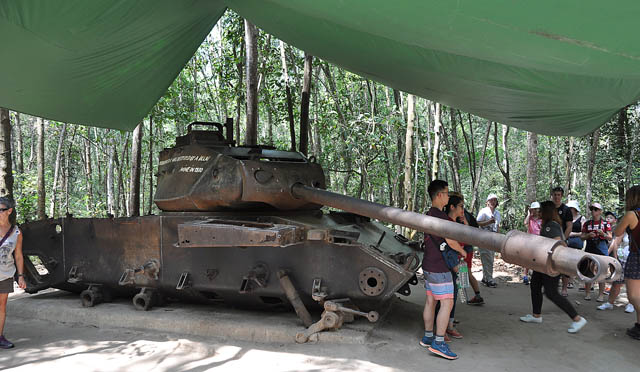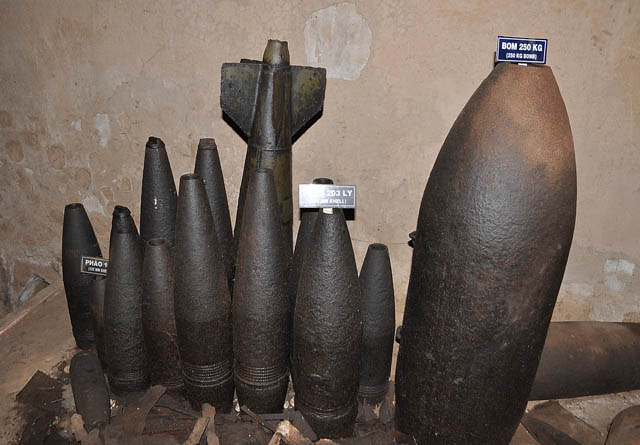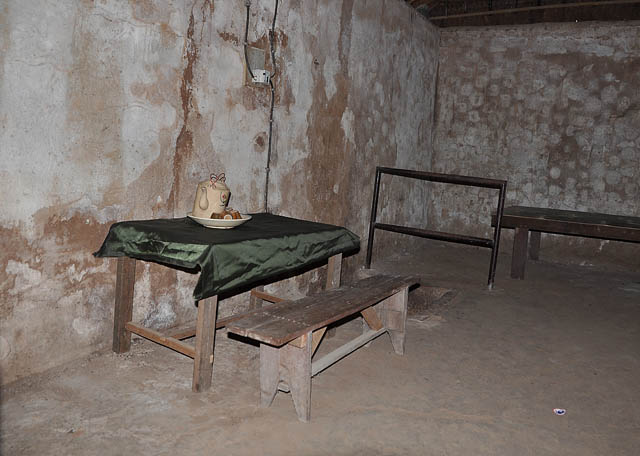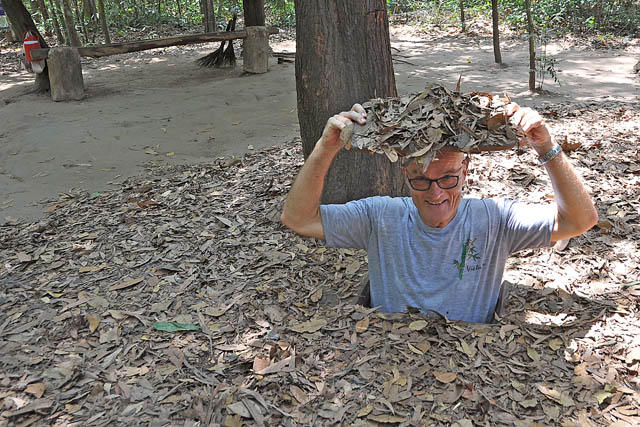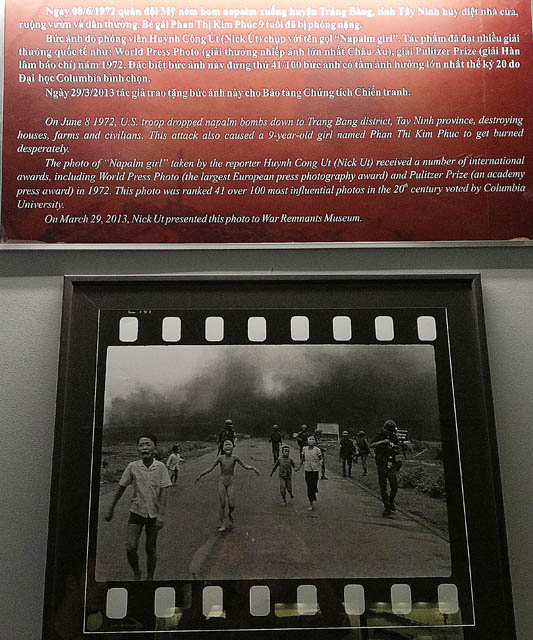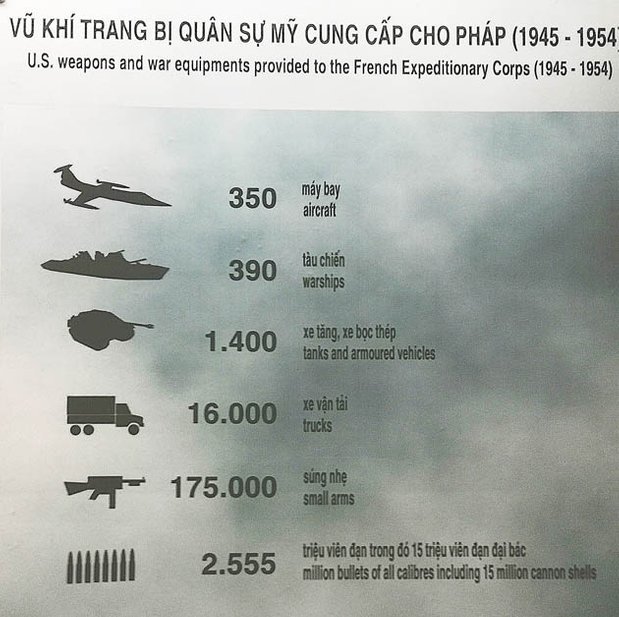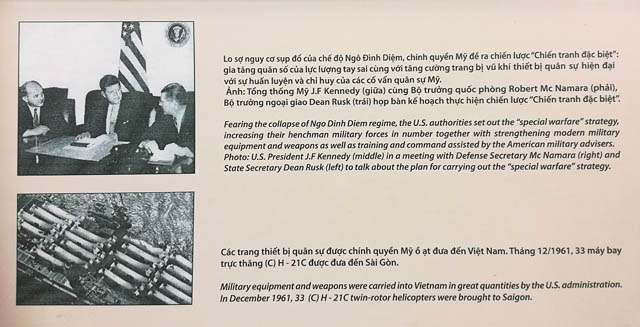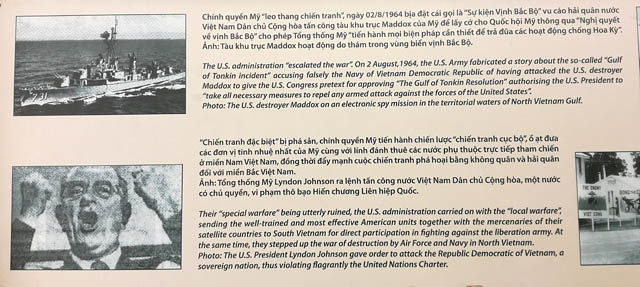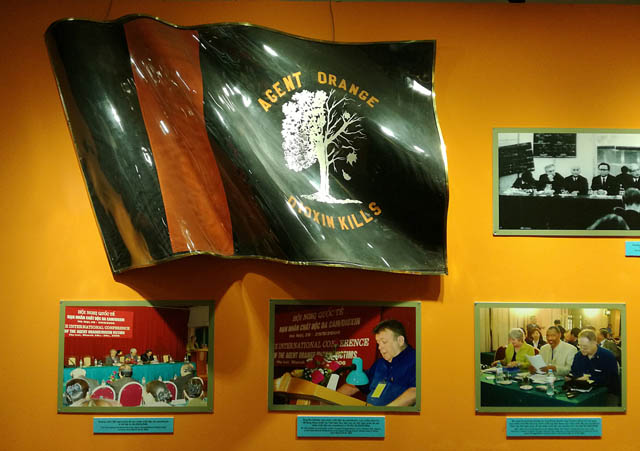C U C H I TUNNEL
Krigsmuséet i Ho Chi Minh (Saigon)
V I E T N A M
An hour's bus trip from the city of HCM (Saigon) and you are in Cu Chi. A tunnel system of more than 250 km where Vietcong, the Vietnamese Communists, had its headquarters during the American War.
(In Norway: Vietnam War)
A myriad of inputs, like a huge fox burrow, led into the tunnels. Strategically, no maps were made of tunnels, only a few locals know, and they could take you wherever you should go.
Living down in the tunnels was obviously not directly healthy. It was very important to get up in fresh air as often as possible.
Of course, Americans tried to break this Command Center, so there were not many times the soldiers could come out to get fresh air.
The tunnels were so deep that they tolerated the weight of tanks of up to 60 tons and 100 kg bombs. Here's one of the tanks the Vietcong soldiers managed to destroy by using a delayed mine.
Everything they could use was used. The iron in old bombs was used to make traps around the tunnels, or in the terrain around. Russian experts came to Cu Chi and taught Vietcong to make mines of the old American bombs. So you can say that the Americans got their bombs back.......
The air holes should of course be camouflaged as well as possible. Like anthills, under leaf or twigs.
Vietnamese people are small, because of today's tourists, perhaps most for Americans (?), the tunnels have expanded from the original ones. So that we Europeans can be able to experience and imagine how it may be down here.
A hundred meters long tunnel has been made for tourists, with the opportunity to go out 4 times along the way. I chose to leave the underground after 20 meters. Although the tunnels were expanded, it became a very special experience. But something you absolutely must do if you decide to go here.
With my 182 cm, I might think that the size of the tunnel gave me about the same feeling that a Vietnamese gets in the original system. But one should not forget that I did this in a peaceful Vietnam. There was something completely different when the Americans tried to break the ones down here. With bombs, water, snakes and gas, to name a few.
The Americans tried to force the Vietcong soldiers out by filling water in the tunnels. However, the system was designed for that, the tunnel is made on three floors, and the lowest drains the water out to the Saigon River that flows close by. The gas attacks they avoid by direction the gas back to the surface, so it became a problem for the Americans themselves. And when they put snakes into the caves, Vietnamese got a long-awaited meat meal.
In the tunnels there were both hospitals, accommodation, food stores and weapons. And of course, their own command room where all the planning of the battle against the enemy was made. That Vietcong managed to maintain these tunnels as close Saigon in South Vietnam, was of course a major concern for Americans.
Tourism in Vietnam, of course, uses the war, here a busload shows a demonstration of traps used to prevent unwanted guests in the underground. Small marks on trees, on the ground, anthills or the like, told where the traps were, what the Vietcong soldiers knew about, but not the Americans obviously.
A large selection of terrible traps were created to prevent unwanted guests from entering the tunnel systems. The US soldiers sent in to try to get out the Vietnamese were called tunnel rats. And of course, it was not a task soldiers wants they had in front of them.
It was not possible to get out of these traps if you had first walked in one. And you woulden´t be killed right away either ........
Here a door trap is demonstrated.
The diet was obviously very unilaterally during the war, and especially down the tunnel. But the worst thing was that they could not cook the rice long enough. Every morning when the fog was about to ease, they made food for 20 minutes. They hoped that the smoke, which was poured into holes several meters from where the kitchen was, would become less visible when mixed with the fog. But it was too short to cook the food properly, which resulted in those who survived the life of the tunnels, slam with stomach problems as long as they lived.
Dette bildet, tatt 8. juni 1972, omtrent i det øyeblikk jeg var ferdig med min videregående skole hjemme i trygge Norge, er kåret til verdens fjerde mest innflytelsesrike bilde fra 1900-tallet.
Det henger i "War Remnants Museum" i Saigon,
gitt av fotografen Nick Ut i 2013.
A museum you should definitely visit if you are in Saigon. Since many of the pictures from this museum have English text, I choose to write mostly in Norwegian, with a small translation of what appears in the pictures.
The Vietnam War was the first war in which helicopters were used in offensive war operations. With powerful weapons, machine guns, among other, they could be used to reinforce the fighting on the ground. Previously, helicopters were mostly used for troop relocations and reconnaissance.
But first we need a trip through France and their attempt to colonize Vietnam from the mid-19th century to 1954.
Som en ser over her, var senere president Nixon involvert i Vietnam og bekjempelsen av kommunister så tidlig som i mitt fødselsår, 1953. Amerikanerne og franskmennene diskuterte i fullt alvor å bruke atombomber i denne konflikten. Heldigvis var det oppegående folk i FN som klarte å stoppe denne galskapen. Det kan også her nevnes at da president Nixon var president under det vi kjenner som Vietnamkrigen, var han på nippet til å bruke samme uhyrlige våpen da også. Og det så sent som på 1970-tallet! Jeg minner om at amerikanerne er våre allierte.
Søylene viser hvor mye amerikanerne bidro med med i den franske krigen mot Viet Minh, Vietnams kommunister. Allikevel beseiret Vietnameserne franskmennen, våren 1954!
Denne plakaten taler for seg selv. Amerikanernes bidrag visualisert på en meget god måte.
This picture I think illustrates the colonists and Vietnamese in a very good way. Victory-sure French military generals run around in their jeep while brave Vietnamese carry cannons and other weapons on bicycles to the ridge around the Frenchmen's outpost in Dien Bien Phu, not far from the border to Laos. The French lived in the belief that it was impossible to transport such large weapons wherever they might have them in a very irreversible terrain. But General Vo Nguyen Giap, who is considered one of the greatest military strategists ever, picked apart all the heavier weapons and transported them, as you can see in the picture, on bikes through the jungle and up to the ridge where they had a full overview of the city there The French kept. Giap (pronounced Zap) by the way, had no military background, he was a historian, and arrogant French did not mean he was anything special. But when they eventually realized that they would lose this last battle, they began to talk to him as a general.
On May 7, 1954, the French had to surrender in Dien Bien Pho, and, as one sees the picture, the last French left Vietnam about a year later.
Selv om franskmennene ble kastet ut av Vietnam, og en fredsavtale ble undertegnet i 1954, presset stormaktene (USA) Vietnam til å godta en todeling. Nord-Vietnam og Sør-Vietnam. Noe som i sin tur førte til Vietnamkrigen fra tidlig 1960-årene til 1975. President Kennedy, som mange har som en helt i vår del av verden, var en solid pådriver for denne krigen. Kommunisthatet i USA var (og er) til tider av slike dimensjoner at de mister alle muligheter til å se konflikter fra andre sider enn den de har bestemt seg for.
Although the French were thrown out of Vietnam, and a peace treaty was signed in 1954, the great powers (USA) pressed Vietnam to accept a division. North Vietnam and South Vietnam. Something that, in turn, led to the Vietnam War from the early 1960s to 1975. President Kennedy, as many see as a hero in our part of the world, was a powerful driver of this war. Communist hatred in the United States was (and is) at times of such dimensions that they lose all opportunities to see conflicts from other sides than they have decided.
Den amerikanske marinen fabrikerte en historie om et angrep på krysseren "Maddox", for å få en grunn til å sende flere soldater og våpen til Vietnam. Dette var etter Kennedys død, og som en ser av bildet, president Johnson prøver å oppildne sine velgere til å skjønne at de gjør det eneste riktige!
Ydmykhet er vel ikke den egenskapen franskmenn eller amerikanere er mest kjent for. Et tydelig bevis på det, ser en på plakaten over her.
Hva som er verst i en krig, er ikke lett å si, men "Agent Orange" som amerikanerne kalte sin giftsprøyting over den vietnamesiske jungelen, må komme veldig langt opp på listen. Etterdønningene etter denne sprøytingen ser en den dag i dag, til og med soldater som var med i krigen på Amerikanernes side har skader som ikke lar seg helbrede. De sprøytet gift over jungelen for å drepe vegetasjonen slik at ikke Vietnamesiske soldater skulle kunne gjemme seg. Følgene av denne ugjerningen er funksjonshemninger som er aldeles uopprettelige. Mødre fødte funskjonshemmede barn, mange fikk sykdommer selvsagt, og avlinger og jordbruksområder ble ødelagt for mange år.
What's worse in a war is not easy to say, but "Agent Orange" as the Americans called their ghost spray over the Vietnamese jungle, must come very far up the list. The aftershocks after this spray see one to this day, even soldiers who participated in the war on the United States side have injuries that can not be healed.
Her er tatt med en historie som det finnes mange av, dessverre. Topptrente, amerikanske soldater kom til en liten landsby der de fant tre unger som hadde gjemt seg i kloakken. To av dem stakk de ned, den tredje, ja jeg klarer ikke å skrive hva de gjorde med ham en gang (les plakaten). Jeg sier enda en gang, amerikanerne var og er Norges allierte.
Selv ikke kvinner og barn ble spart i mange av aksjonene amerikanerne utførte mot landsbyer der de mente Vietcongsoldatene hadde hatt tilhold.
Det siste bildet viser hva våre allierte, de kristne amerikanerne gjør med noen av sine krigsfanger. Her har de tatt med en vietnamesere opp i helikopteret, og slipper ham bare ut når de finner det for godt.
The last picture shows what our allies, the Christian Americans, do with some of their prisoners of war. Here they brought a Vietnamese to the helicopter and throw him out......
Amerikanerne måtte forlate Vietnam i 1973, og 30. april 1975 marsjerer Nord-Vietnamesiske tropper inn i Saigon og Vietnam blir ett land igjen. Og Saigon blir hetende Ho Chi Minh som en hyllest til landsfader og onkel Ho. Som dessverre ikke fikk se sin store drøm gå i oppfyllelse, han døde i 1969.
Jeg setter stor pris på en hyggelig hilsen i GJESTEBOKA MI - GUESTBOOK




